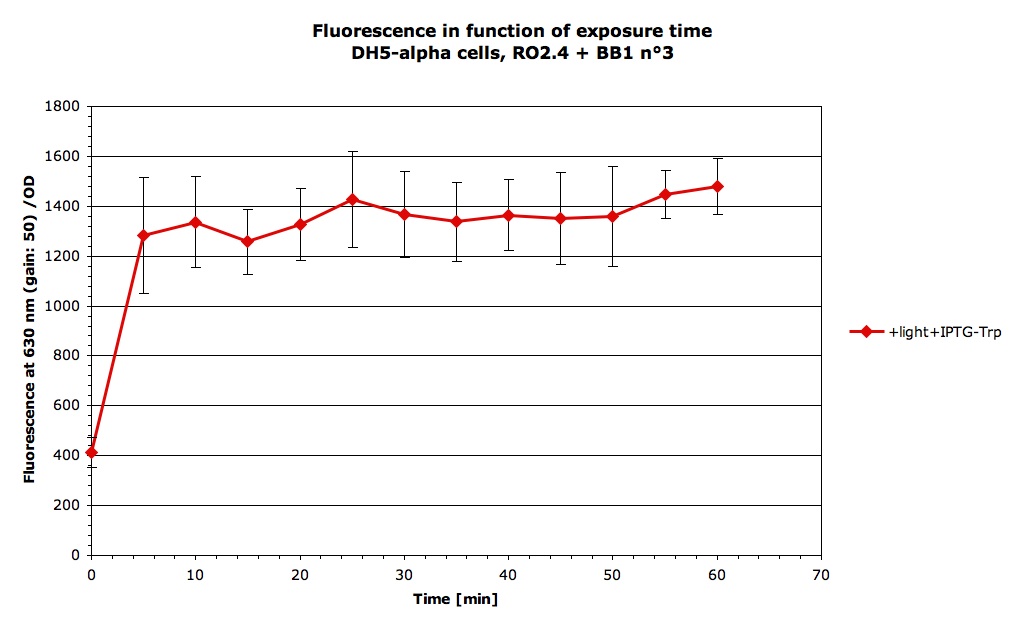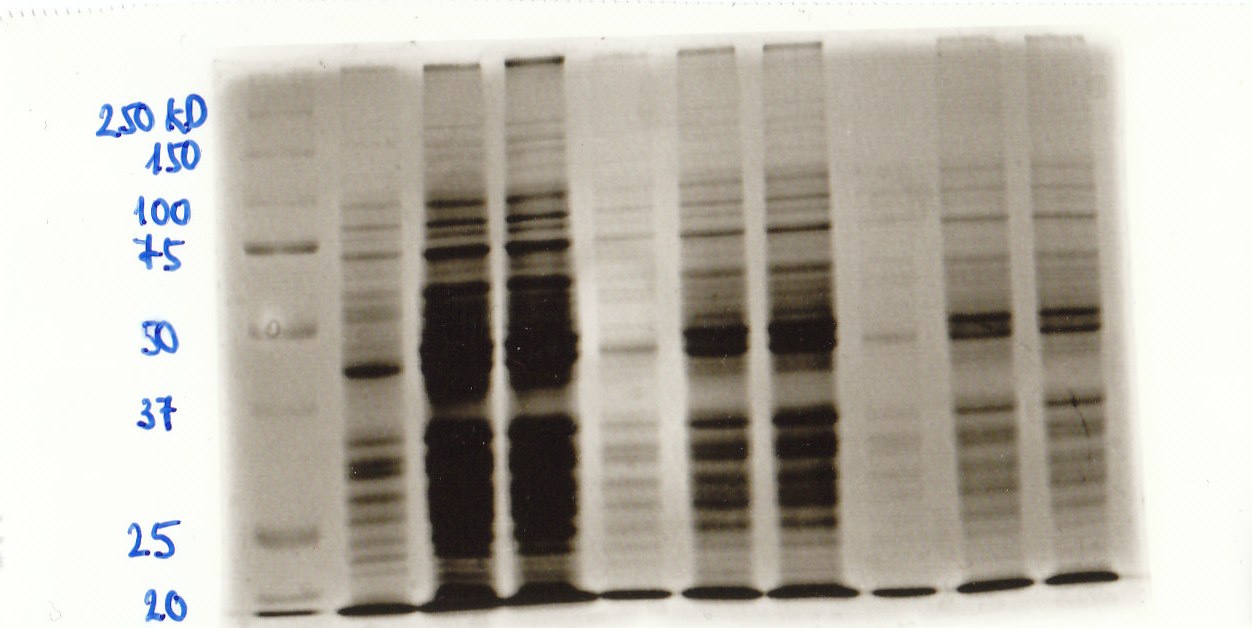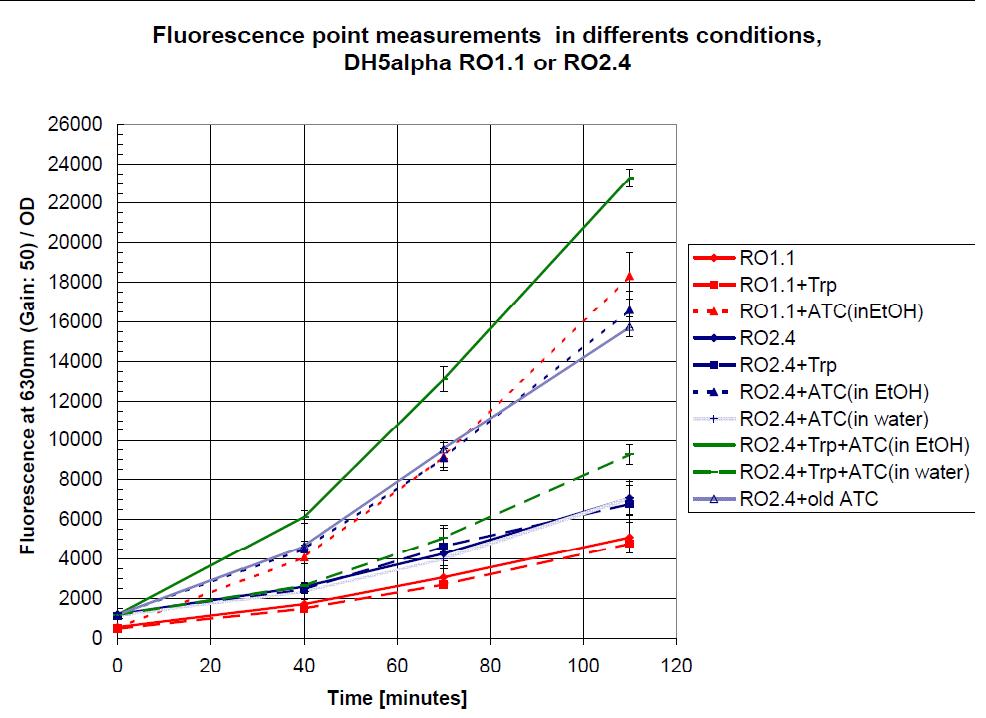EPF-Lausanne/17 October 2009
From 2009.igem.org
Contents |
Wet Lab
Miniprep of clones n°1 and n°10 containing the plasmid with the gene for the mutated LovTap.
Transformed Dh5-alpha competent cells with:
- RO1.1
- RO2.4
- RO1.1 + BB1
- RO2.4 + BB1
- RO1.1 + mutated BB10
- RO2.4 + mutated BB10
This is to have "new" cells with our constructs, since somehow double-transformants sometimes appear to lose one of the plasmids or something else, or they don't work as effectively as they did earlier. Maybe this'll solve our problems?
Redid the experiment we did on Thursday, so putting one Erlen of cells with RO2.4 + BB1 into the experimental conditions every 5 min. This time we'll keep one tube in the dark, so that we see the "basal" level of RFP expression:
Took the picture of the polyacrylamide gel that Basile did yesterday, to see whether the LacI promoter we'd taken from the kit and used for our LovTap biobrick works: we wanted to see whether there's a different level of expression of our LovTap between cells with or without IPTG added to the medium. In theory, the +IPTG should have a higher level of expression than the -IPTG. From the gel we can see that the patterns of expression are exactly the same (LOVTAP's size is about 26.5 kDa)--> IPTG has no influence on the level of expression of LovTap.
Experiment with RO1 or RO2 only transformant in DH5-alpha in different conditions such as with Trp and/or ATC. Measurements were done with the microplate reader every 30-40 minutes during the 2 hours. We use 2 samples of ATC, an old sample that were used for a characterisation of RO2 and a new one which didn't show the results expected.
The results graphique are found below:
ATC shouldn't have any effect on RO1 but should increase RFP expression level in RO2 while Trp should inhibits RFP production in RO1-transformant and inversely increases RFP level in RO2-transformant.
A plausible hypotesis is that the ATc solution affect the binding affinity of the TrpR as it is in a 50% EtOH solution. We found an article relating this fenomena: E. coli trp Repressor Forms a Domain-Swapped Array in Aqueous Alcohol Structures .
This could explain our results. We think that in the RO2 there is a saturation of TrpR which could explain why it doesn't respond to Tryptophan.
People in the lab
Gab, Tu, Christian


 "
"



